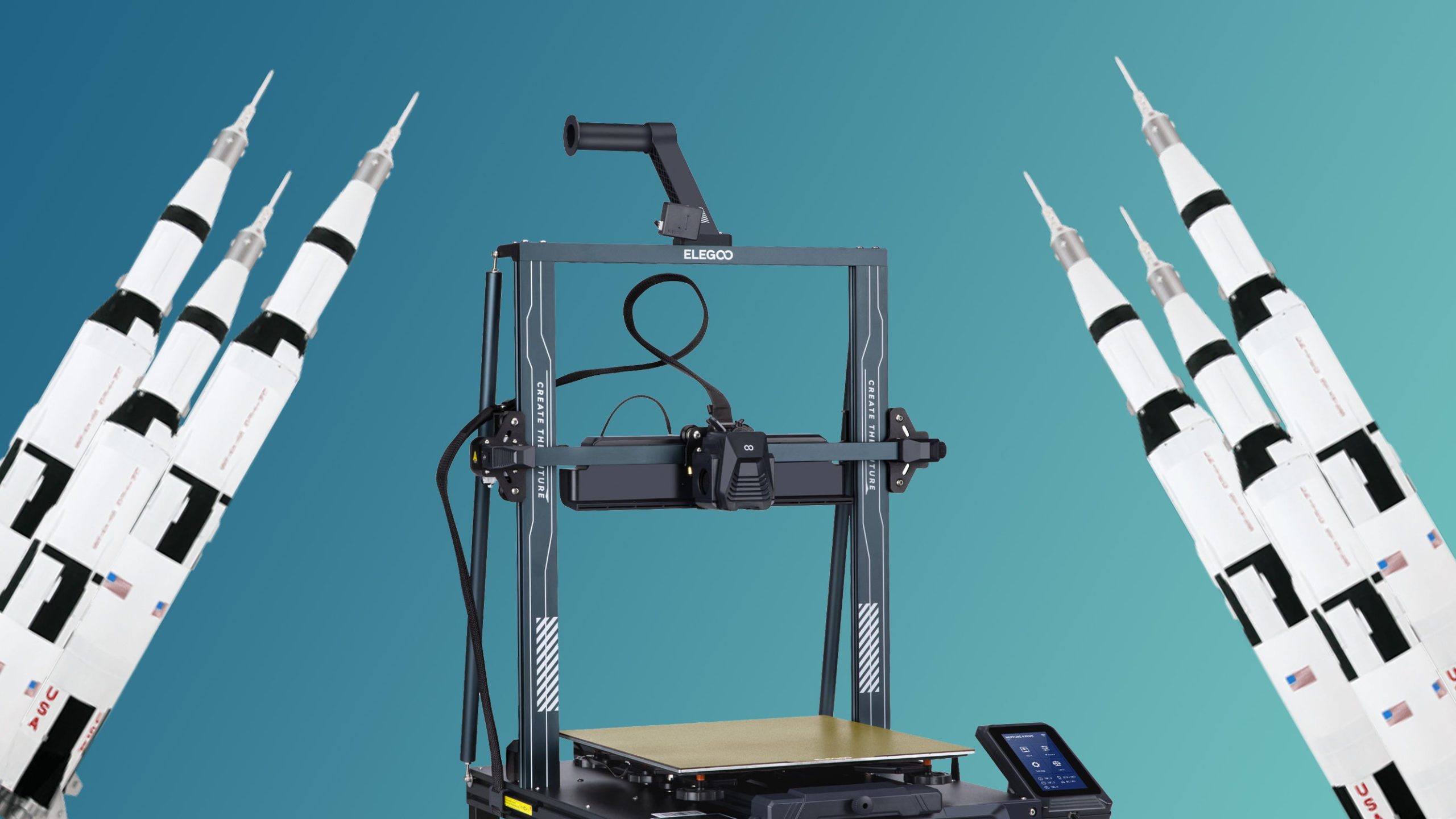I’ve always been fascinated by 3D printers but I’ve never known what I would do with one. When Shenzhen-based firm Elegoo offered to send their $350/£300/€350 Neptune 4 Plus for review, I figured I’d better take them up on their offer and find out just what’s possible with a modern 3D printer – and what challenges awaited me as a complete beginner. Here’s what I’ve discovered – from the gauntlet of the initial setup process to the successes and failures that have defined the first few weeks of 3D printing.
First, the setup process. The Neptune 4 Plus comes in pieces, so you need to follow an IKEA-style assembly process to join the major components, mount the included control pod and connect a bunch of wires. There’s a printed manual provided, but there’s also a digital version on a USB stick. That stick also contains a video tutorial for the setup process, which I followed carefully. The build itself is quite straightforward and ought to take around an hour, with no real challenges – each step’s smaller components like screws are neatly labelled in separate bags and all of the tools are provided which is nice.
The real challenge comes when you’ve screwed everything together, plugged everything in and turned the machine on for the first time – as now it’s time for levelling. This process requires you to raise or lower the nozzle, hundredths of a millimetre at a time, until a piece of paper between the nozzle and the print bed can be pulled but not pushed back in. This process is repeated on six points around the bed, with the adjustment coming this time from springs below that you can tighten or loosen by rotating a dial. Again, you’re looking for a decent amount of friction between nozzle, paper and bed; judging friction takes some patience.
1 of 8 Caption Attribution The Neptune 4 Plus is a big boy, with a total print volume of 320x320x385mm – which requires a fair amount of desk space. Happily, the build process is quite straightforward, with each step’s components bagged together and all tools provided.To see this content please enable targeting cookies.
Specs and features
Print volume: 320x320x385mmMax printing speed: 500mm/s11x11 (121-point) auto-levellingUp to 300°C nozzleCompatible with PLA/PETG/ABS/TPU/Nylon filamentsWiFi/ethernet/USB transferTotal price: $350/£300/€350
After finishing the six points, I had seen a YouTube video that recommended not going ahead to the next step – auto levelling – but instead to go back to the initial levelling step, levelling the centre point once again, doing the six springs again and then finally moving onto the auto-levelling procedure. I did this – only tearing my piece of paper once or twice – and was rewarded with the auto levelling stage, which sees the print head move to 36 different points on the bed in sequence.
From here, it’s a simple matter of adding a spool of PLA to the holder at the top of the machine, feeding it through the ‘out of PLA’ sensor, pushing it into the top of the print head as far as possible and then finally pressing the ‘load’ button to heat up the head and start pulling the PLA through it. I didn’t quite know what to do with the PLA that flowed through, but I used the plastic scraper tool to poke it away from the print bed and that seemed to work OK.
